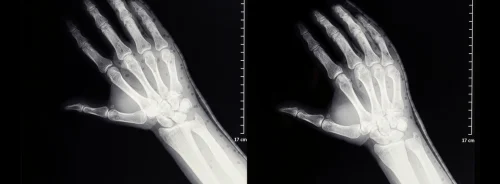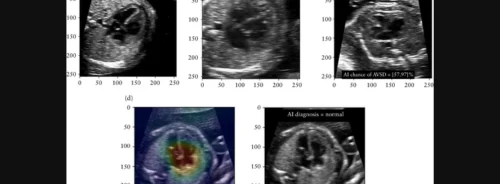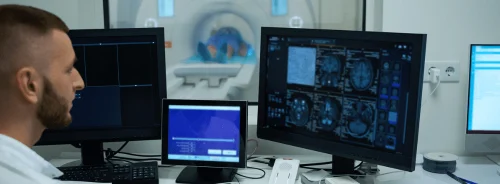HealthManagement, Volume 6 - Issue 5, 2006
Ensuring a Viable Service
Authors
Dr Hanna Pohgnen
Rosalieco Oy
Espoo, Finland
Prof. Hans Blickman
Chairman
Dept. of Radiology
Umc St. Radboud
NIJMEGEN, The Netherlands
Today, the possibilities offered by the digital workplace, such as remote reporting and off-hour coverage mean that virtual radiologists can offer imaging services in new and exciting ways. The challenge, however, is to provide trust over distance - across departmental or even national boundaries. In this article, we discuss three major issues in building trust in remote reporting: organisational change issues, continuous feedback and legal implications.
Thus far, remote reporting has been technically restricted by point-to-point connections and manual sending of patient information between participating organisations. However, regional solutions for RIS and PACS covering the whole community have addressed this lack, providing healthcare record summaries or index databases that are the glue enabling the viewing of images from other organisations, as well as electronic marketplaces, where consultation services can be delivered in a flexible way.
Financial and Technical Aspects
Financial and technical considerations typically dominate the planning of a remote reporting service. Common questions that are discussed carefully on the side of the service provider include:
• How many units of clinical service will need to be sold to cover costs?
• How many units of clinical service will need to be sold to make a profit?
• What are the resource requirements (funding, personnel costs, facilities, technical solutions, etc.)?
• How does the cost of production balance against projected revenues?
The challenge, however, is to provide trust and learning over distance across departmental or even national boundaries. It is also crucial to understand how the community will be affected by the proposed service to ensure viability after the pilot phase and integration as a seamless part of the radiological operation of a hospital.
In the following section, three different aspects important in building trust in remote reporting are discussed: organisational change issues, continuous feedback and legal implications.
Organisational Change Issues
When the organisation is prepared for integrating remote reporting as part of the radiological operation of a hospital, trust in the service itself can be built. In order to do so, the following factors in the current organisational environment should be considered:
• What groups will support the development of a remote reporting service? Why?
• What groups will block the development of the service? Why?
• How will you gain support or buy-in for the development of the service in your organisation?
• What problems can you anticipate that will affect the success of the remote reporting service?
The remote reporting service provider should be closely involved in the organisational change management of the customer. The customer should get familiar with the ‘face’ of the service provider. The backgrounds of the project leader and the core project team and their ability to execute the business case strategy should be clearly described. At the very least, the following questions should be answered:
• What are the roles and responsibilities of the project leader and the project team?
• Who are the key leaders, what is their experience with similar projects?
• Does the project team have training or learning needs to support the success of the proposed project?
• Describe the function of outside supporting professional services, if any.
• What are the reporting relationships between key project team members?
Continuous Feedback
When buying a remote reporting service the customer wants proof of quality, known and accepted processes and protocols, transparency, possibilities for peer review and double-blind readings from time to time. On the other hand, the service
provider expects access to the relevant data,feedback on discrepancies and learning fromother specialists.
A prerequisite for a self-sustainable remote radiology business case includes feedback from both radiologists and clinicians in building and main- Thus far, remote reporting has been technically taining trust in a remote reporting situation where the service provider is not in the same location and ensuring transparency in performance and quality indicators. Users of the remote reporting service should be able to give digital feedback easily and in a user-friendly way.
At the same time learning is enabled by systematic automation of feedback on different levels between participants in the healthcare process. Constructive feedback creates a safe environment for individual self-improvement. Feedback software should be easy to use and preferably desktop integrated with the local RIS/PACS (see fig. 1).
Legal Implications
In building a remote reporting business case, you should consider the main issues that may arise from the need to manage personal information in a manner that takes into consideration both individual sensitivities and the need to provide healthcare practitioners (and, potentially, patients, administrators and others) with access to health records. In particular, you need to demonstrate that you have understood the trust and security implications arising from the legal and clinical environment in which the remote reporting service is to operate.
The following issues should be discussed and agreed on between the service provider and the customer:
• How will patient information be stored, transmitted and used so that it is kept confidential and only shared with those individuals who have a legitimate need to see it? Will encryption and electronic signatures be needed? How will patient consent be recorded and, if necessary, used to govern access to information?
• How will all actions performed be associated with the individual who performed them? What manual and automated facilities will be required to maintain and subsequently process any audit trail/security log etc.?
• What processes will be used to address disaster recovery and business continuity?
• Who will provide the service and who, ultimately, will be responsible for the care of the patient – will clinical responsibility be shared, in fact, between several clinicians?
• How much will the patient be told about how their information is used and how will their informed, voluntary consent be obtained? Who, under what circumstances, may act on behalf of the patient to grant or withhold consent?
• What legislation governs the capture, storage, dissemination and destruction of information? Are there different legal considerations in different relevant countries? What are the legal implications if the information management process fails to achieve the required or expected Quality of Service as might be described in terms of confidentiality, integrity (e.g. completeness and correctness), and availability (e.g. timeliness) of information?
• Will the service be offered locally, nationally or internationally? If so will the radiologists involved need to be qualified and insured to practice in another country? Will it be necessary for them to revalidate their qualifications or take new ones?
• If the service is to be provided online, how will contracts be created and entered into and how will payments be collected?
Conclusion
Building trust in remote reporting is a complex and challenging task that should be carefully considered from several points of view in order to assure a self-sustainable remote reporting service.�





